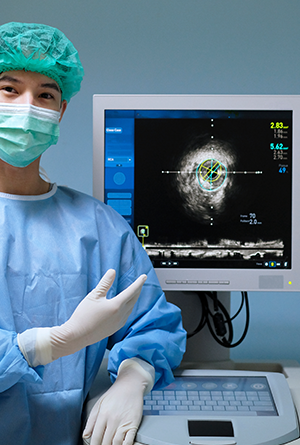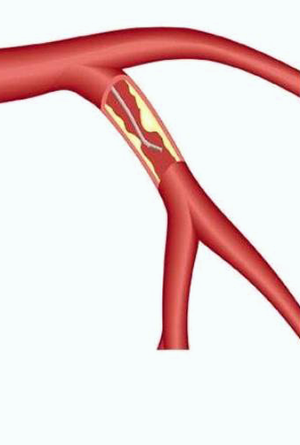
Love Your Heart,
Love Your Life!
Celebrate World Heart Day: How Technology is Revolutionizing Heart Treatment in India.
29 September 2023
Welcome to a celebration of good health and well-being on World Heart Day! This special day, observed globally, highlights our heart’s health and emphasizes the importance of the best heart treatment practices. As we embark on this journey together, let’s explore the significance of World Heart Day and learn about the top-notch heart treatments available in India.
Understanding World Heart Day
World Heart Day, celebrated every year on September 29th, is a unique opportunity for people worldwide to join in the fight against cardiovascular diseases. It’s a day to raise awareness about heart health, promote heart-healthy lifestyles, and share valuable insights into the best ways to prevent heart-related ailments. By spreading knowledge and fostering a sense of community, we can work towards reducing the impact of heart diseases in India.
Prioritizing Heart Health: Best Heart Treatment Options
In India, we are fortunate to have access to cutting-edge heart treatments that prioritize patient well-being and safety. When addressing heart conditions, it’s essential to remember that prevention is as crucial as treatment. Leading a heart-healthy lifestyle that includes a balanced diet, regular exercise, stress management & avoiding tobacco significantly reduces the risk of heart disease.
The Role of Technology and Expertise
Medical technology advancements have revolutionized how heart diseases are diagnosed and treated. India’s healthcare sector boasts state-of-the-art facilities and skilled cardiologists at the forefront of these innovations. Diagnostic tools such as echocardiograms, stress tests, and cardiac catheterizations allow for accurate heart health assessments, enabling healthcare professionals to tailor treatments to individual needs.
Advanced Technology Used to Diagnose and Treat Cardiac Patients - Know about these with World Heart Day Around
Intravascular Ultrasound (IVUS)
Low Contrast PCI for Kidney Patients
Calcium Debulking Technology - Rotational Atherectomy and Cutting Balloons
Bioabsorbable Polymer Drug-Eluting Stents (DES)
Transcatheter Aortic Valve Replacement (TAVR)
The Role of TAVR and TAVI Technology in Treating Heart Disease
Transcatheter aortic valve replacement (TAVR) and transcatheter aortic valve implantation (TAVI) have transformed the treatment of aortic stenosis, a heart condition characterized by aortic valve narrowing. Surgical aortic valve replacement (SAVR) was traditionally the go-to treatment, but TAVR and TAVI offer minimally invasive alternatives. These procedures involve inserting a prosthetic aortic valve through a catheter, making them suitable for high-risk patients who can’t undergo open-heart surgery. Patients undergoing TAVR and TAVI have shorter recovery times, reduced discomfort, and improved quality of life.
SICD and Rhythm Management
Quality of Life Post-Procedure
SICD to inhibit Sudden Cardiac Arrest (SCA)
The Subcutaneous Implantable Cardioverter-Defibrillator (SICD) is an advanced technological marvel in cardiac care. It enhances rhythm management and dramatically improves the quality of life for patients, particularly those with CAD at risk of Sudden Cardiac Arrest. This innovation exemplifies how technology continues transforming the landscape of heart disease treatment, offering hope and a brighter future for those affected by cardiac conditions.
Promoting a Heart-Healthy Lifestyle
While advancements in medical science offer remarkable solutions, the foundation of a healthy heart starts with you. Adopting a heart-healthy lifestyle reduces heart disease risk and maintains overall well-being. Here are some positive steps you can take:
On this World Heart Day, let’s come together as a community to celebrate life and commit to heart-healthy choices. By prioritizing our heart’s well-being and staying informed about the best heart treatment options, we can create a healthier, happier future for ourselves and our loved ones.
Remember, a healthy heart leads to a vibrant life full of joy, energy, and endless possibilities. Happy World Heart Day!
References:
1. https://www.bostonscientific.com/en-IN/medical-specialties/structural-heart/sentinel-cerebral-protection-system/protected-tavr-trial.html
2. https://classic.clinicaltrials.gov/ct2/show/NCT04149535/
3. https://pubmed.ncbi.nlm.nih.gov/36121045/
4. https://consultqd.clevelandclinic.org/protected-tavr-finds-reduced-rate-of-disabling-stroke-with-cerebral-embolic-protection/
5. https://my.clevelandclinic.org/health/diseases/23046-aortic-valve-stenosis/
Disclaimer: The information presented by Boston Scientific India is for educational purposes only and does not recommend self-management of health issues. The information should not be treated as comprehensive and does not intend to provide diagnosis, treatment or any medical advice. Individual results may vary and hence, it is advisable to consult your doctor regarding any medical or health related diagnosis or treatment options.
IC-1695405AB-0923
Related Articles
Tags
Heart Attack | World Heart Day | Intravascular Ultrasound | TAVR | TAVI | Drug-Eluting Stents | SICD
















